From the beginning of human history, the sea has been a source of power and mystique. Sailors loved and feared it. Tradesmen used it to build their fortunes. Vacationers admire its stunning, often tempestuous beauty. Fishermen use it to feed villages and nations. But is a sea the same thing as an ocean? If not, how many seas are there in the world? Read on to find out all about the seas of our world!
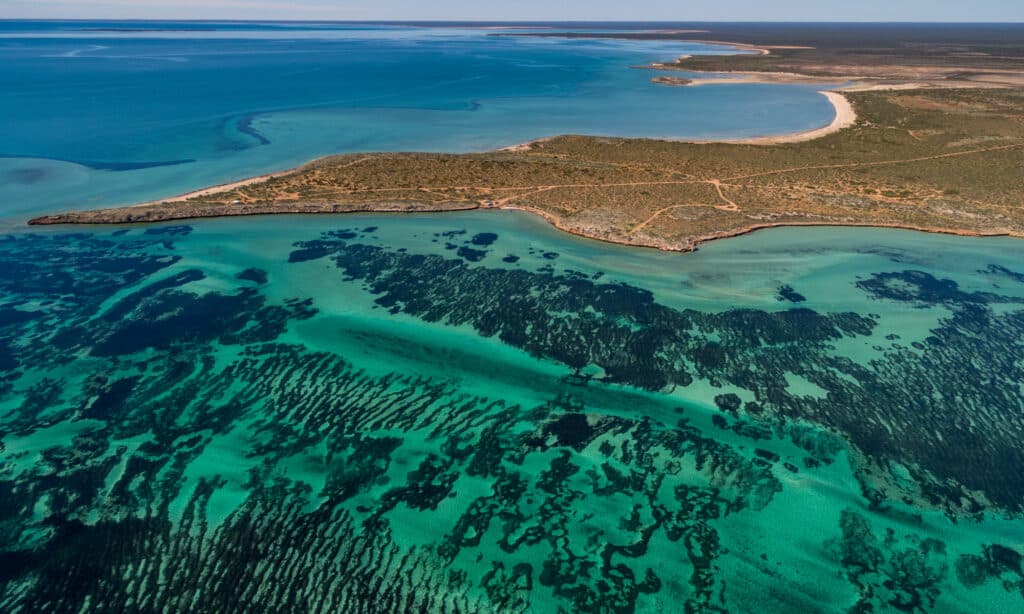
There are approximately 50 seas in the world including the Mediterranean, Caspian, and Red Seas.
©Philip Schubert/Shutterstock.com
Is a Sea the Same Thing as an Ocean?
No, a sea is not the same thing as an ocean. The difference has more to do with boundaries than anything else. Oceans, properly speaking, are the vast, open portions of the earth’s salt waters. When a section of the ocean is partly surrounded by land, then it is a sea.
Because the earth’s landmass and bodies of water are always shifting, the number of seas is not static. Over time, new seas are formed and old ones disappear. Because it can be difficult to know for sure whether a body of water is an ocean, a sea, or a lake, ecologists have not reached a consensus on the exact number of seas in the world.
How Many Seas Are There in the World?
There are approximately 50 seas in the world. This assumes that the definition of a sea as a partially land-locked portion of ocean is correct.
So what about the famous “seven seas” sailors once sailed? Well, this number is based on the more traditional definition of the word “sea.” Oceanographers once considered the seven seas to be seven different regions of the five oceans. These regions have changed several times throughout history since their introduction by the Greeks. The modern version of these regions are:
- The Arctic Ocean
- The North Atlantic Ocean
- The South Atlantic Ocean
- The North Pacific Ocean
- The South Pacific Ocean
- The Indian Ocean
- The Southern Ocean
3 of the Most Famous Seas in the World
For a variety of reasons, some seas are more famous than others. This could be due to their natural beauty, popularity as a tourist spot, abundance of marine life, unique properties, or historical significance. Below are 3 of the most famous seas in the world.
1. The Mediterranean Sea
The Mediterranean Sea is an ancient body of water connected to the Atlantic Ocean. It is almost totally surrounded by land from 3 continents: Africa, Asia, and Europe. As one of the most significant seas in human history, it has promoted extensive trade and travel between various lands.
Nor is that all. The Mediterranean Sea is home to a diverse group of wildlife including several species of whales, dolphins, and porpoises. Loggerhead and green turtles make their home there as well as monk seals and an abundance of sharks and rays.
Perhaps most fascinating is what exists at the bottom of the Mediterranean Sea. This body of water lies in the Herodotus Basin, which contains the oldest stretch of seafloor known today. Most ocean floors are no older than 200 million years, the older parts have shifted down. But under the Mediterranean Sea is a portion of crust that is as old as 340 million years!
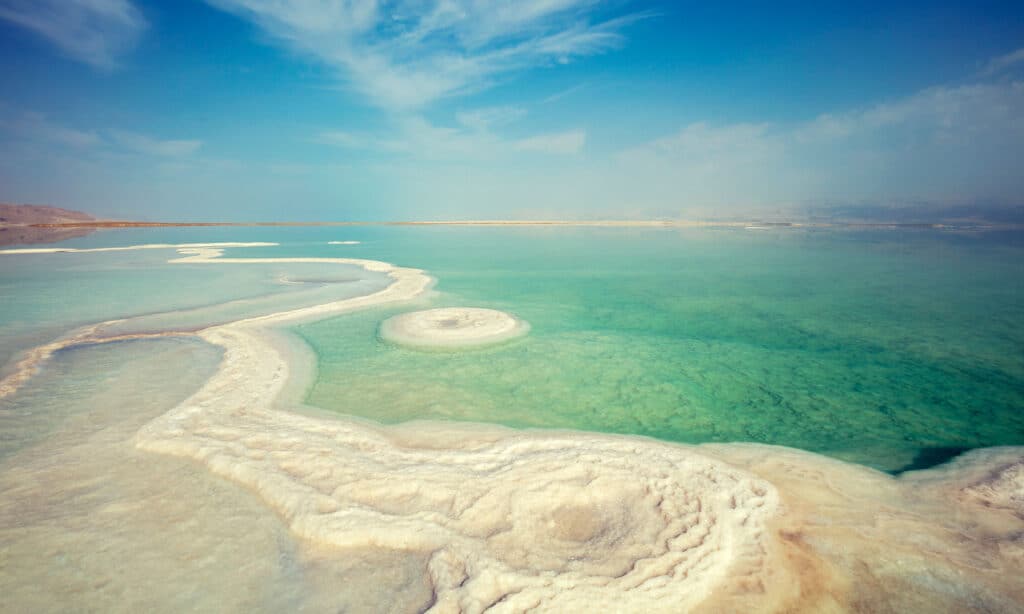
The Dead Sea is famous for being one of the saltiest bodies of water in the world.
©iStock.com/vvvita
2. The Dead Sea
The Dead Sea is perhaps most famous for being one of the saltiest bodies of water in the world, so salty that virtually no organisms can live there. The salinity is so high that people can actually float in the water with no effort. This has inspired an intense tourist trade as people not only float in the sea but also use the abundant minerals to achieve a spa effect.
However, some microbes like bacteria and microscopic algae are able to survive in these super-salty conditions. For example, the microbe Haloferax volcanii thrives here. Additionally, scientists have discovered nearly 80 species of fungi living in the water.
The Dead Sea has one more claim to fame: it is the lowest point on Earth! It sits at 427 meters below sea level. It is totally landlocked, meaning it has no connection to any of the world’s oceans. For this reason, some people consider it a lake, not a sea.
Unfortunately, there are some concerns that the Dead Sea will eventually dry up. It has already gone down about 20 meters over the past century as humans have redirected some of its sources for irrigation and other purposes.
3. The Caribbean Sea
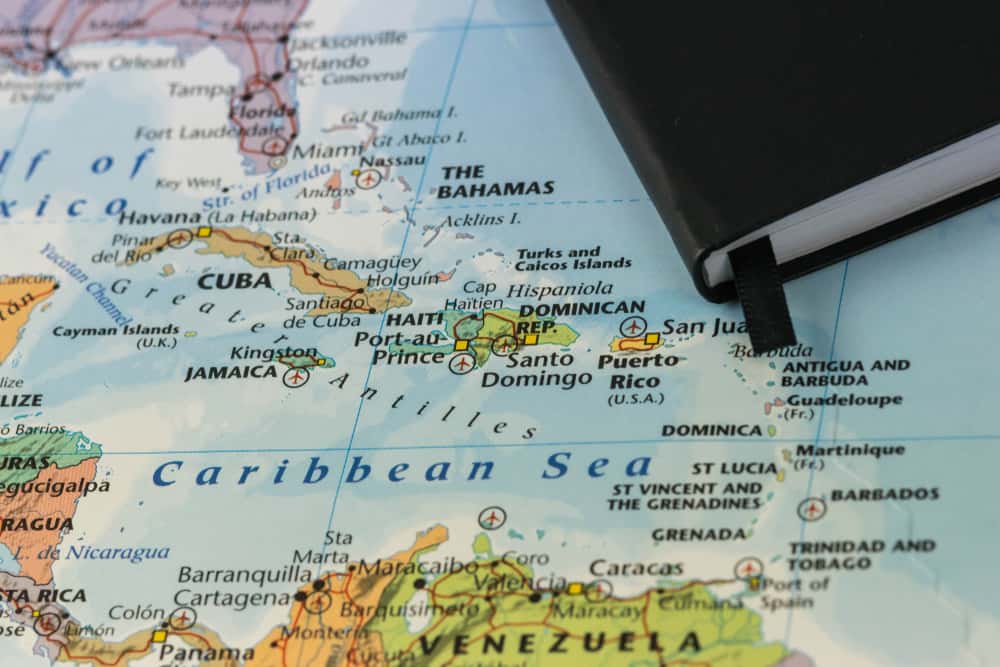
The Caribbean Sea connects to the Atlantic Ocean and lies between North and South America.
© wael alreweie/Shutterstock.com
The Caribbean Sea is one of the world’s largest seas with an area of approximately 1,063,000 square miles. It connects to the Atlantic Ocean and lies between North America and South America. It is most famous for its astonishingly blue waters, which host an incredible variety of sea life. This is due in part to the Mesoamerican Barrier Reef, the second-largest reef in the world. The reef hugs the coastlines of Mexico, Belize, Guatemala, and Honduras for 620 miles.
The Caribbean Sea hosts a variety of baleen and toothed whales as well as sharks like the hammerhead, black tip, and leopard sharks. Jellyfish, sting rays, and turtles are common residents along with conches and mollusks. The sea and its reef are also home to many fish such as barracuda, sturgeon, and damselfish.
Other well-known seas include the Red Sea, Bering Sea, Caspian Sea, Baltic Sea, and Black Sea.
Are Seas Salty?
Yes, all seas contain salt water, even the ones that are landlocked like the Caspian Sea, Dead Sea, and Aral Sea. Rivers flow into these seas where the salts in rocks dissolve into the water. This is what gives the water its briny quality. Usually, seas and oceans mix, sharing much of their marine life.
Some may consider the Sea of Galilee to be an exception to this rule as it contains fresh water. However, the Sea of Galilee is not a sea at all. It is Israel’s largest freshwater lake, occupying an area of about 64 square miles.
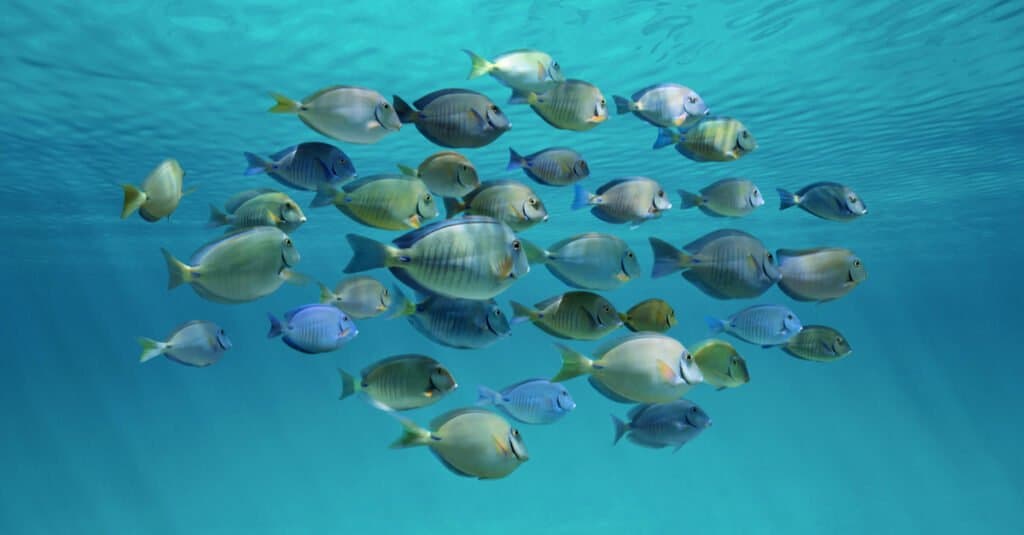
Many seas face the threat of pollution and the decimation of its marine life. The Baltic Sea is considered the most polluted sea in the world.
©Damsea/Shutterstock.com
Pollution of the Seas
As with other bodies of water around the world, seas are facing an environmental crisis. Pollution has reached a critical point with many seas suffering an inflow of plastics, toxic metal compounds, and dangerous chemicals.
The Baltic Sea is perhaps the most notorious example. Some environmentalists call it the most polluted sea in the world. It is fed by a number of rivers like the Neva, Vistula, and Daugava that carry industrial pollutants from urban regions. Additionally, in the past Russia has dumped nuclear waste into the Baltic Sea. The waste remains radioactive to this day. As if all that wasn’t enough, drug and hormone residues have caused sterility in many of the fish.
Seas contain some of the world’s most beautiful and abundant wildlife, and it is vital to preserve them far into the future.
Which is Deeper, the Sea or the Ocean?
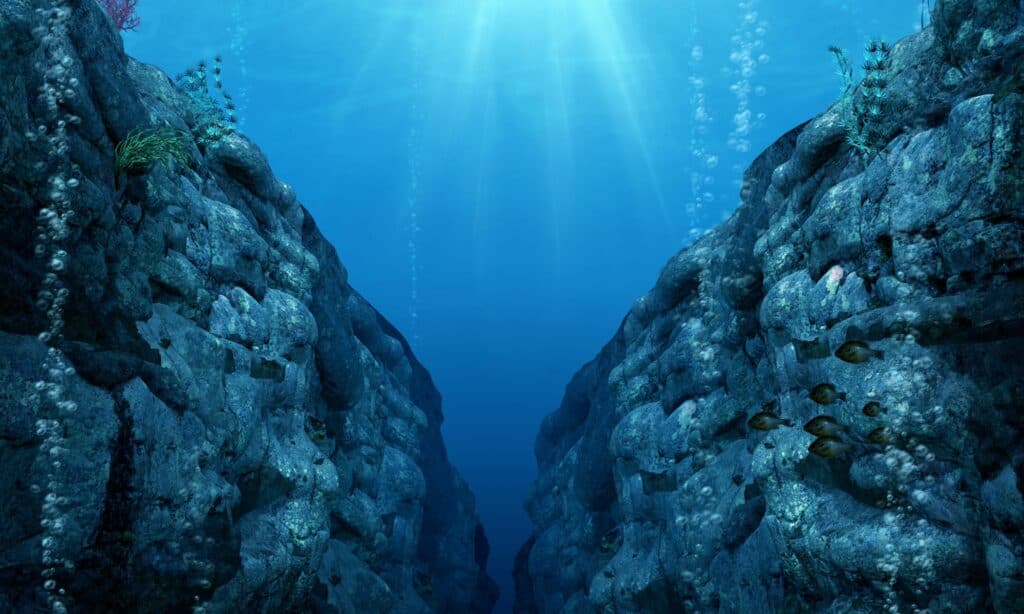
The Marianas Trench, located in the Pacific Ocean, is the deepest point in all the oceans, with a depth of 36,200 feet.
©iStock.com/ratpack223
Oceans are generally much deeper than seas, although there are some exceptions where seas are almost as deep as, if not deeper than, oceans. The average ocean depth is 14,041 feet (4,280), while the deepest area of the ocean, the Marianas Trench, is found in the deepest ocean, the Pacific Ocean. This trench has a depth of 36,200 feet. Compare this to the deepest sea, the Caribbean Sea, which has an average depth of 7,217 feet (2,200 meters) and a maximum depth of around 25,215 feet (7,686 meters) below sea level.
Oceans don’t necessarily indicate deeper areas than seas, as the Arctic Ocean does not have the same depth as the Caribbean Sea. With an average depth of 3,950 feet (1,204 meters) and a maximum depth of 17,880 feet (5,450 meters), the Arctic Ocean is the smallest and shallowest.
The photo featured at the top of this post is © Anton Balazh/Shutterstock.com
Thank you for reading! Have some feedback for us? Contact the AZ Animals editorial team.







